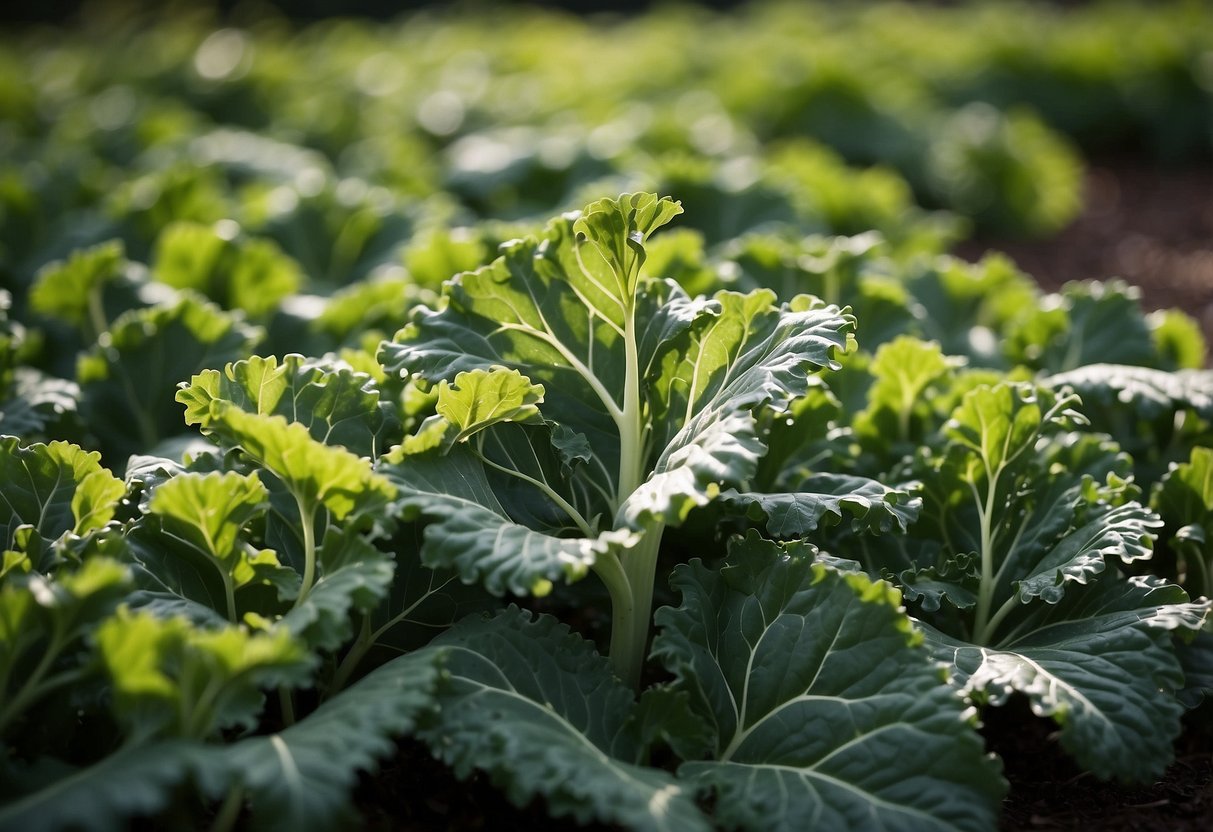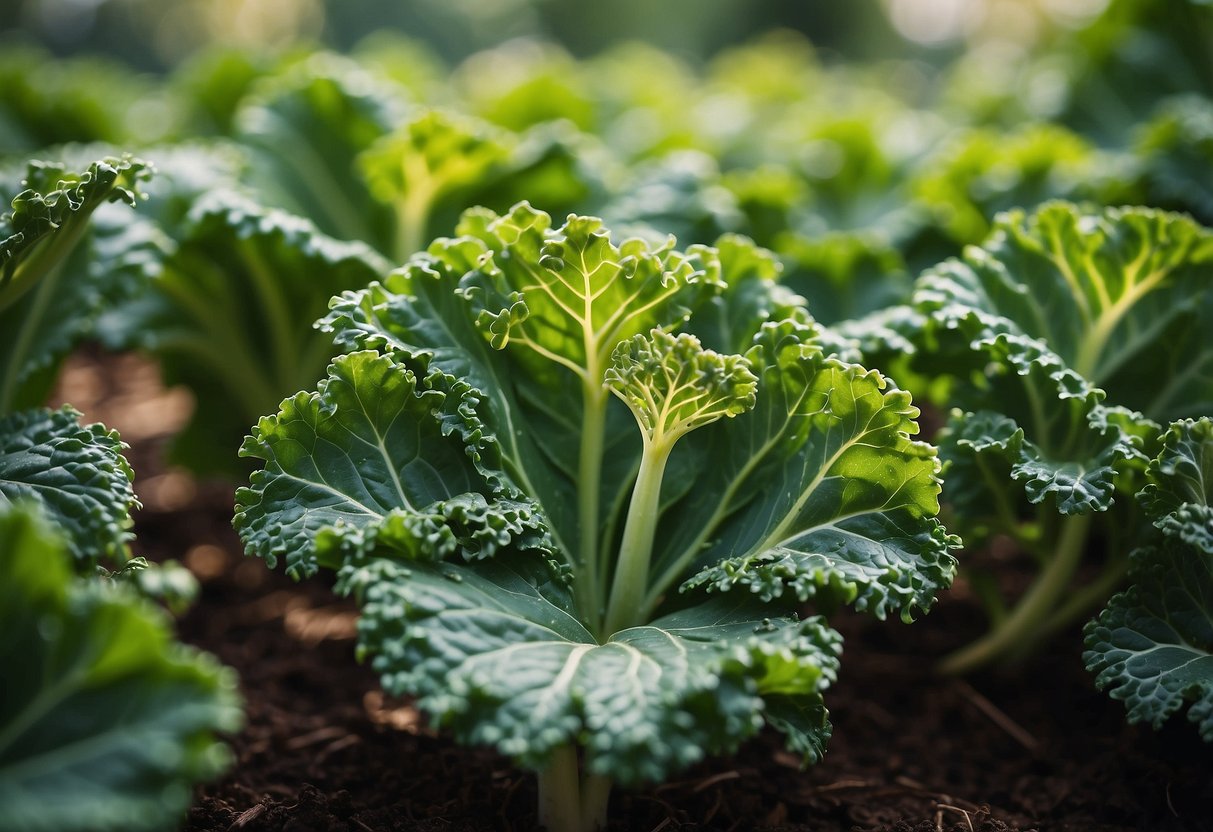Kale Garden Ideas: Fun and Easy Tips for Beginners
Growing kale in your garden is not only rewarding but also a fantastic way to add fresh, nutritious greens to your meals. Whether you are an experienced gardener or a beginner, you’ll find many creative ideas to cultivate and care for kale in your own backyard.

What are the best strategies to grow healthy and vibrant kale plants? You will learn various tips and tricks to ensure your kale thrives and keeps your family’s diet rich with this versatile vegetable. Discover companion plants, the benefits of container gardening, and different methods to maximize your harvest season after season.
1) Raised Bed Gardens for Kale

Kale grows well in raised beds. You need at least 12 inches of soil depth, as kale has deep roots. This helps the plants get strong and healthy.
Choose a sunny spot with at least 6-8 hours of sunlight each day. Good sunlight helps kale thrive. Space the plants about 8 to 12 inches apart to ensure each plant has enough room to grow.
Consider using a 4×4 foot raised bed. This size is perfect for planting kale without overcrowding. Proper spacing and good sunlight will help prevent disease and give you a healthy kale harvest.
2) Container Gardening with Kale

Growing kale in containers is a great option if you have limited space. Choose a pot that is at least 12 inches deep and has good drainage to prevent waterlogging. You can grow kale with other leafy greens like lettuce and spinach, as they have similar light, nutrient, and water needs.
Use a high-quality organic potting mix and add a layer of compost to enrich the soil. When planting, ensure each kale plant has about 12 inches of space. Keep the soil moist, and place the container in a sunny spot for the best results. For more tips, check out these container gardening tips.
3) Perennial Kale Varieties

Perennial kale varieties are a fantastic addition to your garden because they keep producing for several years.
One popular type is Daubenton’s kale. It’s hardy, productive, and very easy to grow.
Another great choice is nine-star perennial broccoli, though it’s technically a biennial that can live a few extra years. With these varieties, you’ll have a steady supply of leafy greens.
4) Companion Planting with Kale

One great idea for your kale garden is companion planting. Growing certain plants near your kale can help improve its growth and protect it from pests.
Marigolds are excellent companions. They keep insects at bay and add lovely colors to your garden.
Planting onions alongside kale can help mask its scent from pests like butterflies and aphids.
You can also try planting lemongrass. It repels aphids and doesn’t compete with kale for nutrients.
5) Kale in Vertical Gardens

Growing kale in vertical gardens is a smart way to save space. You can use trellises, wall-mounted planters, or even hanging gardens to grow your kale. This method allows you to make the most of small spaces.
Kale grows well vertically and receives plenty of sunlight. It also looks beautiful when its leaves start to mature. Try planting kale in a GreenStalk Vertical Planter for a practical and eye-catching setup.
Vertical gardens let you grow more plants without taking up valuable ground space. Perfect for urban gardening!
6) Kale in Greenhouses

Growing kale in a greenhouse is a great way to ensure a steady supply of this nutritious green. Kale prefers cool temperatures, typically between 60-75°F.
Plant your kale seeds about 1/4-1/2 inch deep and around 1 inch apart. Once they sprout, you should thin them to 8 inches apart.
Water your plants thoroughly after planting and keep the soil moist during the early growth stage. With a greenhouse, you can enjoy fresh kale even when it’s frosty outside. For more tips, check out how to grow kale in a greenhouse.
7) Hydroponic Kale Setup

Growing kale without soil is fun and rewarding. Start by getting a jar and filling it ¾ full with water. Place your kale stem cutting in the jar and set it in a sunny spot.
After about a week, you’ll see new leaves. You can create a Kratky jar setup for small-scale growth by keeping this jar system going. This way, you can have fresh, healthy kale all year round. Also, make sure the temperature stays between 65-70°F for best results.
For a more detailed setup, you can explore this hydroponic kale guide.
8) Mulching Techniques for Kale

Mulching is a great way to keep your kale plants happy and healthy. It helps retain moisture, keep the soil cool, and reduce weeds.
One option is to use wood chips. They are effective and pet-friendly. Another good choice is straw, which helps prevent soil erosion and keeps the leaves clean.
If you prefer something organic, compost is an excellent mulch. It enriches the soil as it breaks down, providing nutrients for your kale.
9) Winter Gardening with Kale

Growing kale in winter is a great way to keep your garden productive. Start by planting seeds about three months before the first frost date. This timing allows the plants to establish before the cold hits.
Kale loves the cold and can withstand frost. You can even harvest after snowfall for a sweeter taste. For best results, space your kale seedlings 12 inches apart.
Consider starting kale indoors in late summer. Then, transplant it into your garden once the weather cools down. If you prefer, you can also grow kale in containers and bring them indoors when winter arrives.
With its vibrant, hardy leaves, kale can brighten up any winter garden.
10) Organic Fertilizers for Kale

Using organic fertilizers for your kale garden is a great way to ensure you are growing healthy and nutritious plants.
Compost is one of the best options. It adds valuable nutrients back into the soil and improves its structure.
Manure, especially from cows or chickens, is rich in nitrogen, which is essential for kale growth.
Fish emulsion is another fantastic choice. It’s packed with nutrients and can be easily absorbed by your plants.
Kelp meal helps improve soil health and provides a range of trace minerals. It’s a good addition for long-term soil fertility.
Blood meal is another powerful organic fertilizer that provides a high amount of nitrogen, promoting lush leaf growth.
Getting Started With Kale Gardening

Growing kale can be incredibly rewarding. To begin, choose the right varieties for your climate and garden space. Prepare the soil well to ensure your kale thrives.
Choosing The Right Varieties
When selecting kale, it’s important to pick the varieties that suit your needs and climate. Curly kale is popular for its frilly leaves and strong flavor. Lacinato kale, also known as Dinosaur kale, has dark, crinkly leaves and a sweeter taste.
Consider planting Russian kale if you live in a cooler climate. This type is known for its vibrant purple and red hues and can withstand frost. Redbor kale is another eye-catching variety with deep purple leaves, adding a splash of color to your garden.
Mixing different varieties provides both visual appeal and a range of flavors. Make sure to read seed packets or plant tags to understand the growth requirements and characteristics of each type.
Preparing The Soil
Kale thrives in loose, well-drained soil with a lot of organic matter. Start by loosening the soil to a depth of about 12 inches. Remove any rocks or debris that could hinder growth.
Add a generous amount of compost or well-rotted manure to the soil. This enriches the soil with nutrients and improves its texture. Aim for a neutral pH between 6.5 and 6.8. You can test your soil with a home kit and adjust the pH as needed.
Consider mulching around your kale plants to help retain moisture and suppress weeds. Use organic mulch like straw or shredded leaves. Regularly check the soil moisture and water your kale consistently, especially during dry periods.
Caring For Your Kale Plants

Proper care includes regular watering and effective pest control to ensure your kale thrives. Here are essential tips on both.
Watering Techniques
Kale plants need consistent soil moisture to grow well. Water them deeply about 1-2 times a week, ensuring the soil stays moist about 1 inch deep. Using a soaker hose or drip irrigation can help provide an even water supply.
Avoid overhead watering, which can encourage pests and diseases. Instead, water at the base of the plants. Mulching with straw or wood chips helps retain soil moisture and reduces the need for frequent watering.
In hot weather, check soil moisture daily. If the top inch of soil is dry, it’s time to water your kale again. Consistent hydration prevents wilting and promotes healthy leaf growth.
Pest Control Strategies
Common pests like aphids, cabbage worms, and flea beetles can target kale. Regularly inspect your plants for any signs of infestation.
Hand-pick larger pests like cabbage worms and drop them into soapy water. For smaller pests like aphids, use a strong jet of water to dislodge them from the leaves.
Introducing beneficial insects such as ladybugs can help keep pest populations in check. You might also use organic pesticides like neem oil or insecticidal soap. These are effective but safe for your plants. Additionally, row covers provide a physical barrier to keep pests away from your kale.
Rotating crops each season helps prevent pests from settling in your garden. This practice keeps your kale healthy from year to year.







